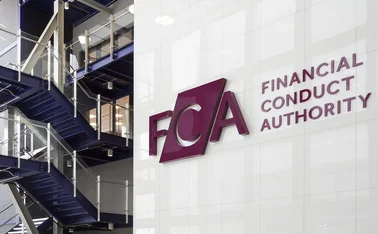
Zurich’s Guy Miller on why recovery is an opportunity for reform

Need to know
- A window of opportunity has opened up to reform the Eurozone
- Debt to GDP is at record levels in most Eurozone countries
- The European banking system is an overlooked risk that must be addressed, with interconnections its Achilles heel
A synchronised global recovery is an opportunity for reform, not for complacency, argues Guy Miller, chief market strategist and head of macroeconomics, Zurich.
Perhaps it should not be so surprising that nearly a decade after the great financial crisis there are finally signs of normalisation beginning to emerge. After all, academic research at the time indicated that balance sheet recessions were a different animal that required a great deal of patience and unconventional approaches to see them through. However, as a semblance of normality takes hold, and a synchronised global recovery gains traction, now is the time that politicians and policymakers must act forcefully to reform and create a robust economic environment capable of weathering the next cyclical downturn. If not, the imbalances and interdependencies that currently remain are likely to result in an even deeper crisis developing in the future.
No area exemplifies this continued vulnerability better than the Eurozone. It is fortunate that global growth has taken hold despite a lame political approach that relied upon the European Central Bank to provide the necessary support, rather than bolstering this with meaningful initiatives. With unemployment showing significant improvement, consumption and investment rising in most countries, and both business and consumer sentiment rallying, the danger is now one of complacency. A window of opportunity has opened up, which must be capitalised upon if the Eurozone is to survive and prosper.
With the exception of Germany, debt is at record levels and has yet to peak in many countries. Debt to gross domestic product is at 135% in Italy and around 100% in both France and Spain, and unlikely to fall meaningfully before the inevitable next economic downturn ensues. Fiscal integration remains taboo, while a move towards capital market and banking unions has progressed at a glacial pace. Indeed the banking system across Europe offers an underestimated, and currently overlooked, risk that must also be addressed.
Size and interconnections represent the Achilles heel of European banking. Although it is widely acknowledged that Europe is overbanked, little has been done to change the model. Banks still represent around 70% of European corporate funding, compared with around half that in the US. They are behemoths, with assets in excess of 300% of European gross domestic product. Consequently, the banks and the economy are inextricably linked, as are the banks themselves. If there is stress in the Italian banking system, for example, French banks will also be affected due to large exposures to Italian claims, which we estimate to be around €300bn (£250bn).
However, it is not just banks in the periphery that are vulnerable. Many core country banks, notably in Germany, are also fragile. It is, therefore, more difficult to contain stress in one banking sector from being transmitted to the rest of the banking system. The linkage of banks to sovereigns, especially in the periphery, has also increased since the Eurozone crisis in 2012, making banks vulnerable to political risks, and economies more vulnerable to banking risks. Buoyant capital markets and a resurgence in bank stock prices can be an opportunity to improve capital buffers, restructure problem loans on balance sheets and reduce leverage.
The current phase of economic expansion is offering countries on a global basis a much needed reprieve, but also a second chance to reform and bolster their economic credentials. Debt sustainability is dependent currently upon growth and a continuation of very low funding costs, which will not last indefinitely. It is to be hoped that actions are taken before the current window of opportunity closes and the next downturn appears on the horizon. Now is not the time for complacency.
Only users who have a paid subscription or are part of a corporate subscription are able to print or copy content.
To access these options, along with all other subscription benefits, please contact info@postonline.co.uk or view our subscription options here: http://subscriptions.postonline.co.uk/subscribe
You are currently unable to print this content. Please contact info@postonline.co.uk to find out more.
You are currently unable to copy this content. Please contact info@postonline.co.uk to find out more.
Copyright Infopro Digital Limited. All rights reserved.
As outlined in our terms and conditions, https://www.infopro-digital.com/terms-and-conditions/subscriptions/ (point 2.4), printing is limited to a single copy.
If you would like to purchase additional rights please email info@postonline.co.uk
Copyright Infopro Digital Limited. All rights reserved.
You may share this content using our article tools. As outlined in our terms and conditions, https://www.infopro-digital.com/terms-and-conditions/subscriptions/ (clause 2.4), an Authorised User may only make one copy of the materials for their own personal use. You must also comply with the restrictions in clause 2.5.
If you would like to purchase additional rights please email info@postonline.co.uk








